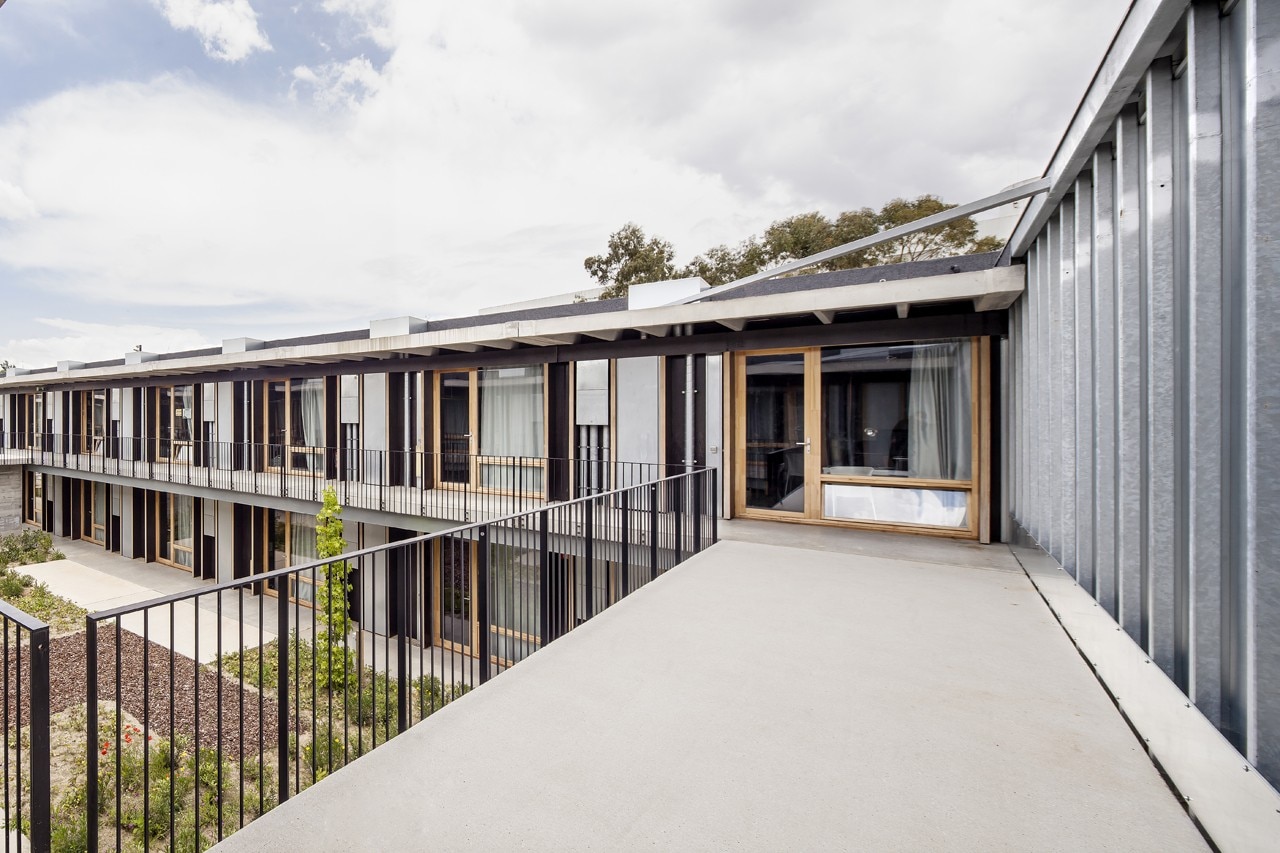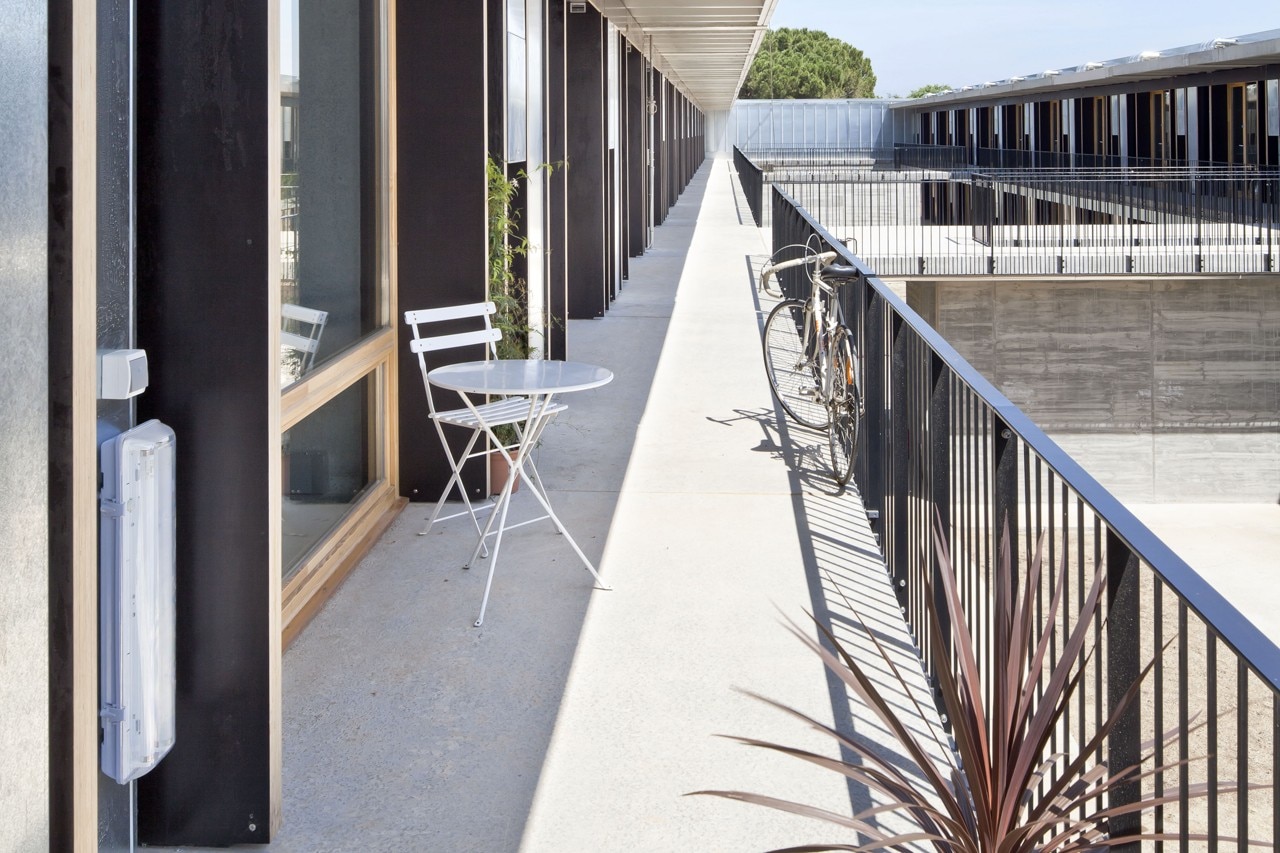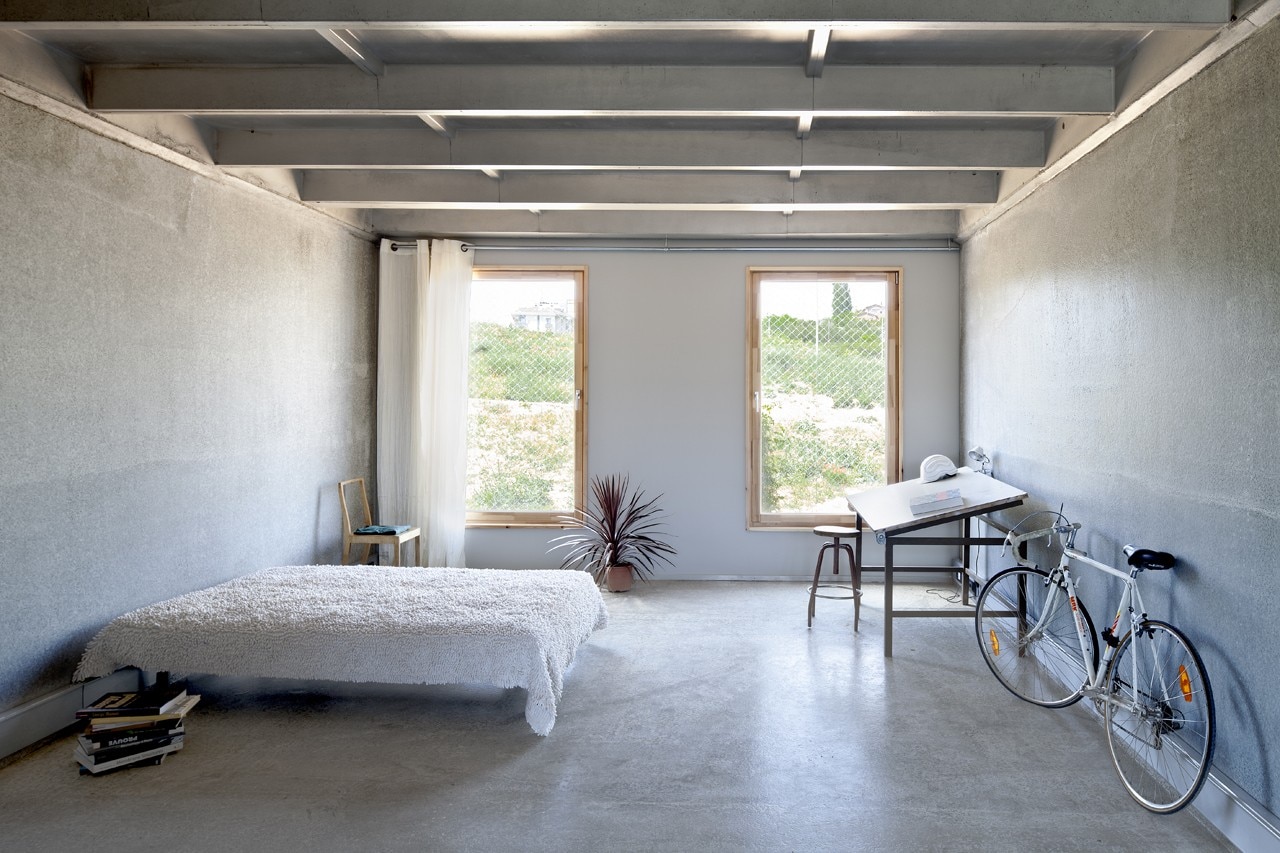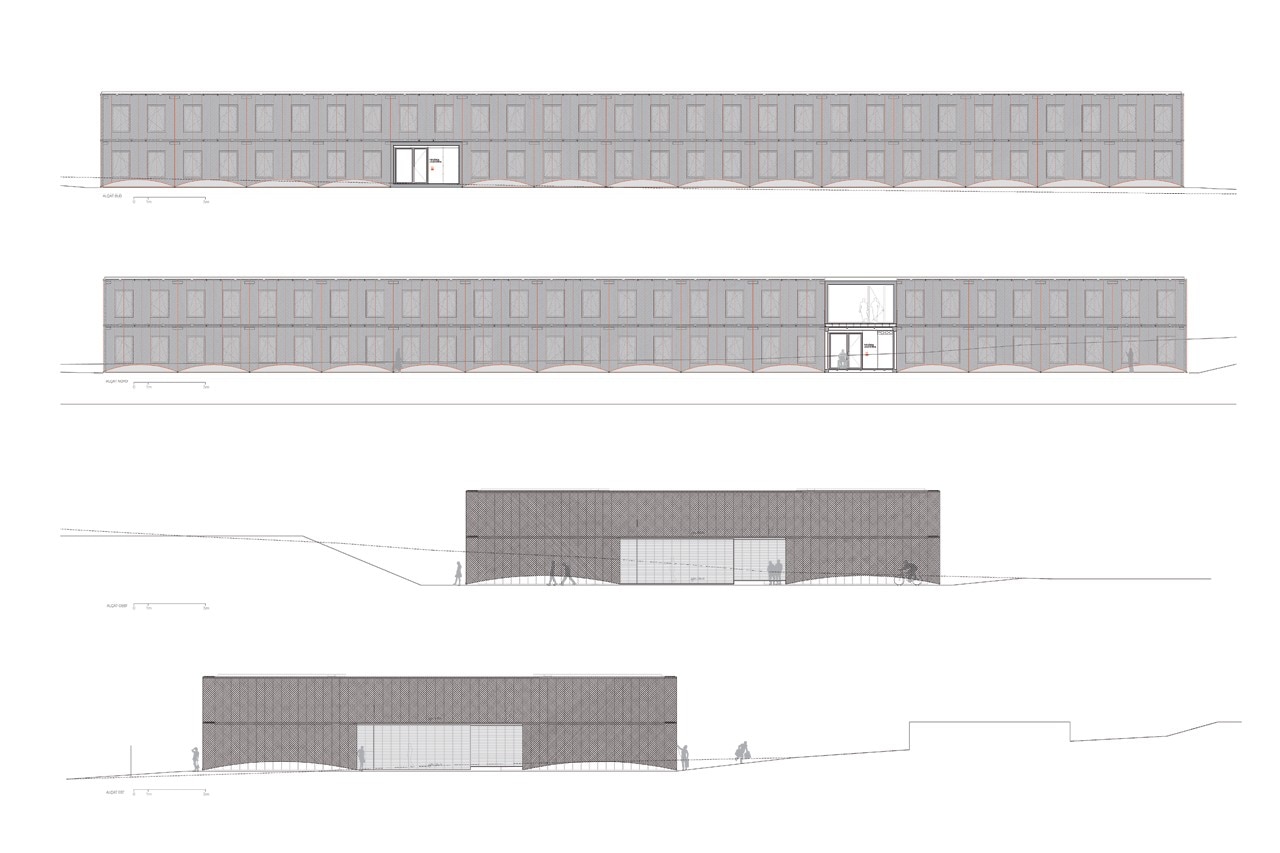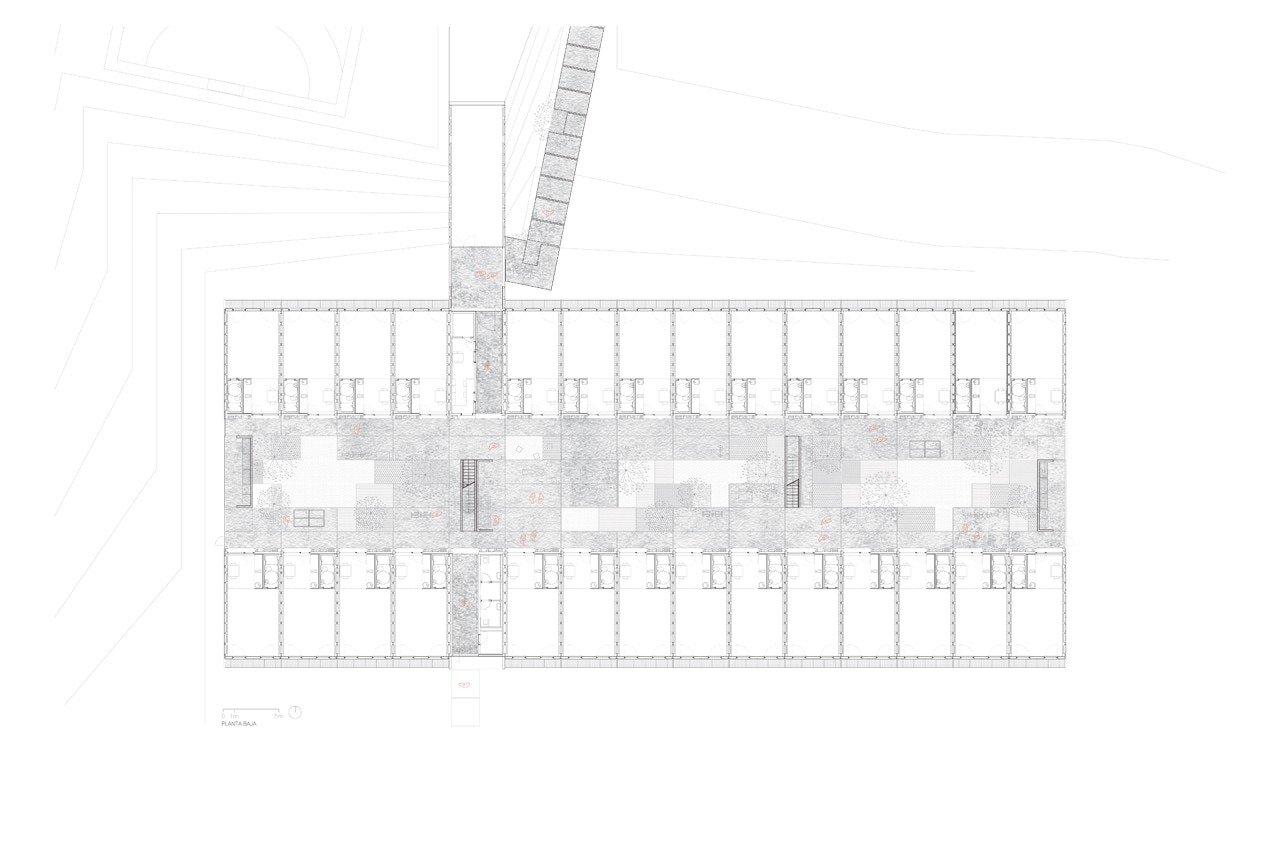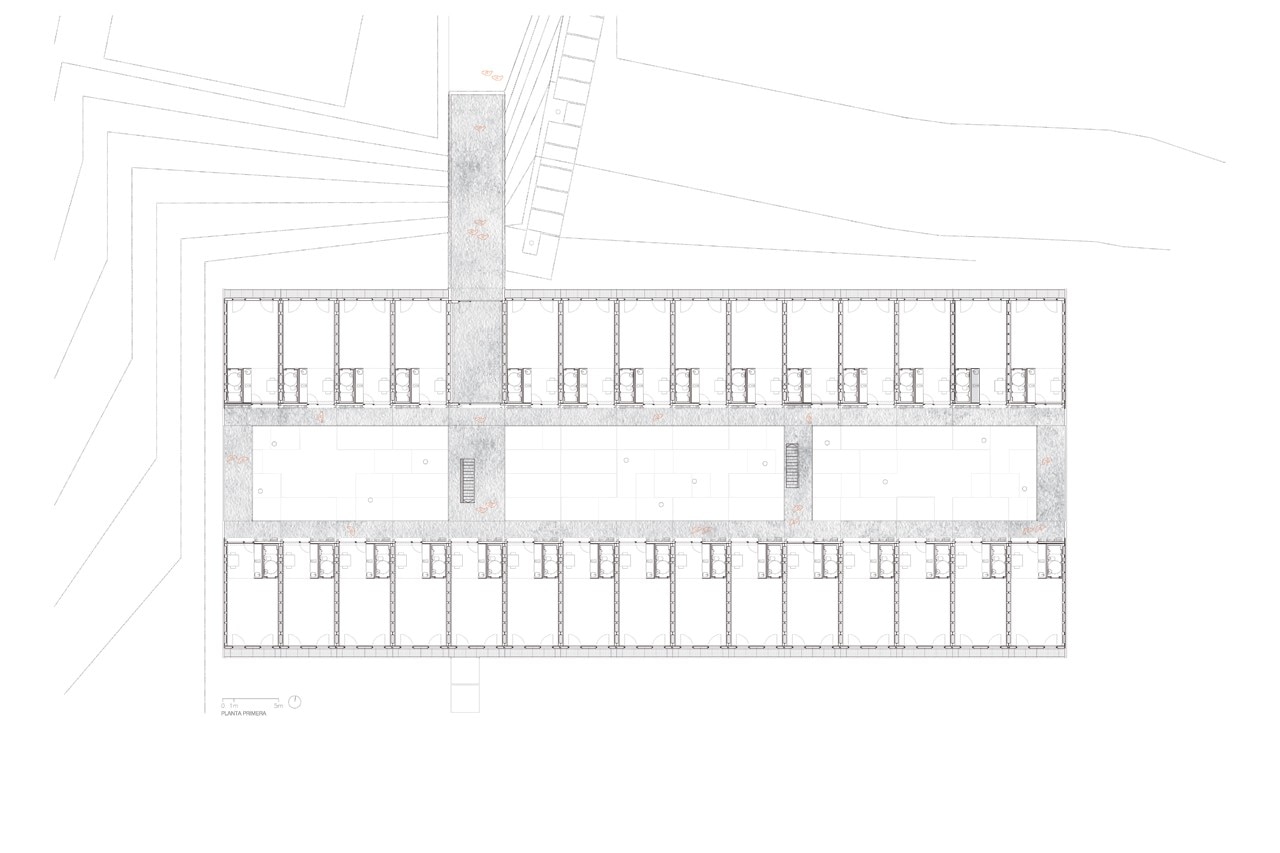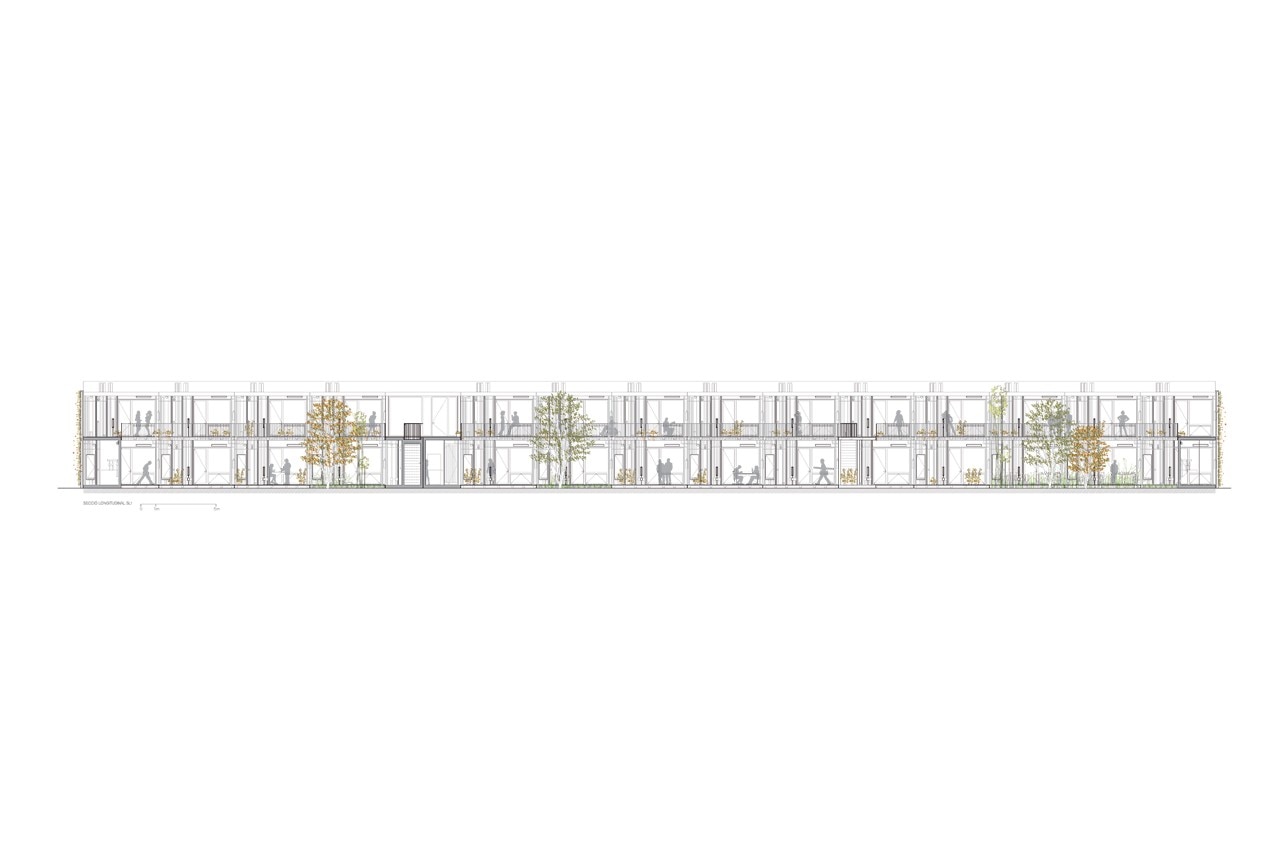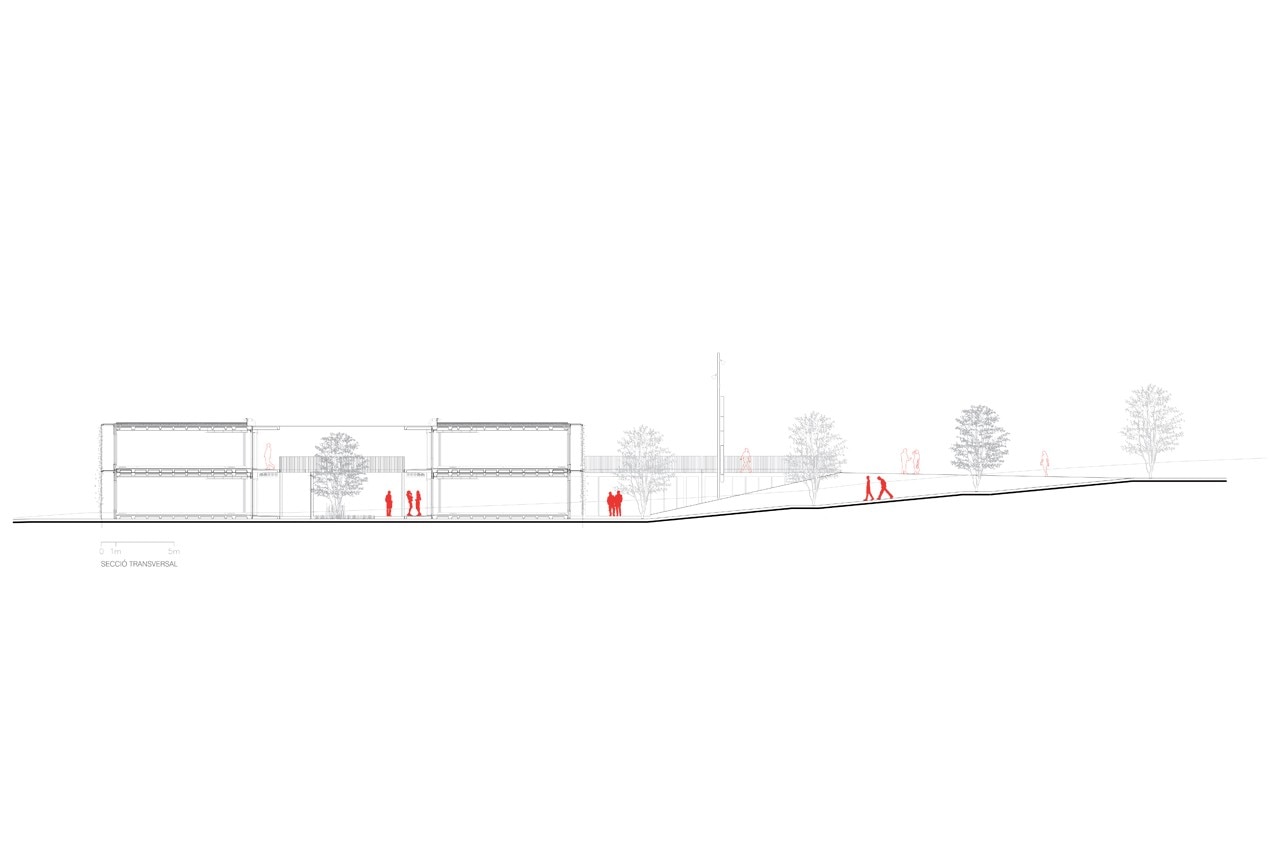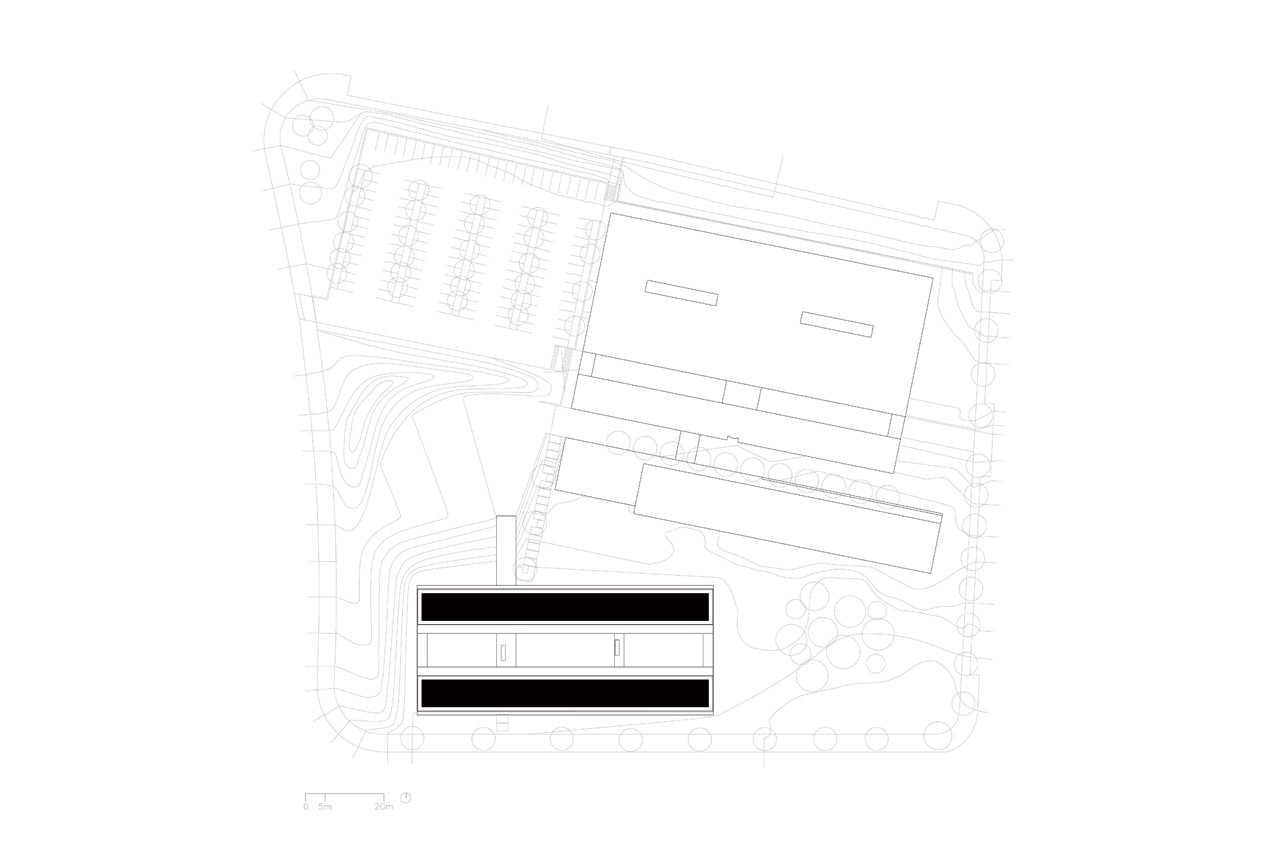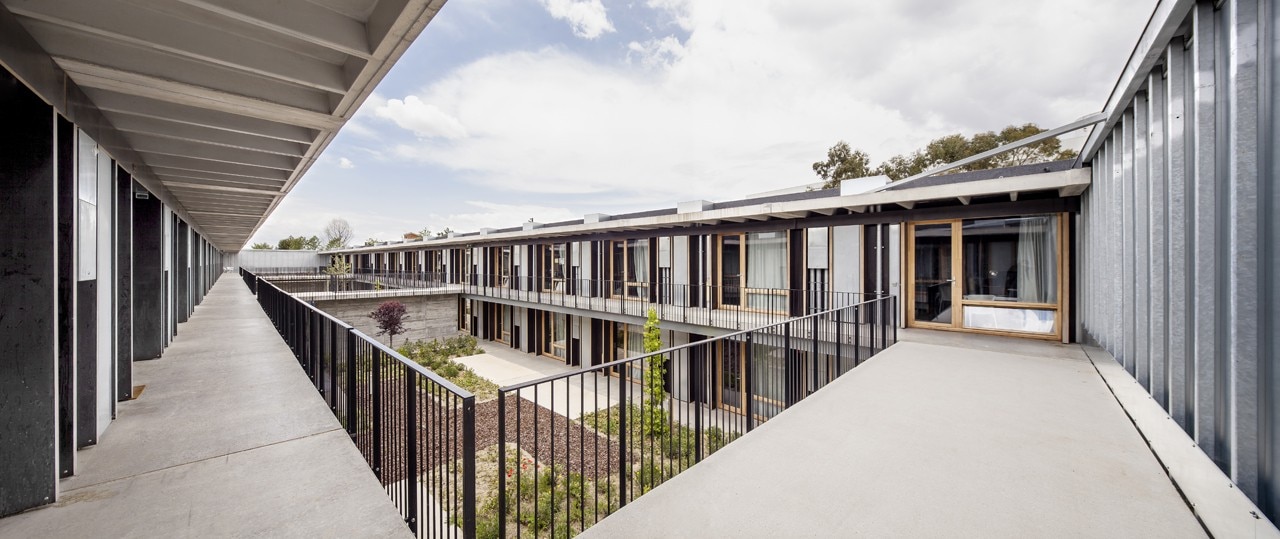
The position of this new building aims to maintain the balance between the existing buildings and outdoor spaces as well as prioritizing the direct connection between housing and campus with the ground floor, promoting the use of outdoor spaces and the horizontal pathways, adapted and without lifts.
The existing topography and its own double parallel block organization allows dwelling to be closer to the ground level and to favour a big central atrium, where, as a living room, the community life will take place. A new space that gives to the dwelling house and campus 1000m2 of non-expected community spaces. The residency program for architecture students allows to imagine deep relationships between users, both individual, due to the housing unit flexibility, and collective, thanks to the potential use of the central atrium as a social event space.
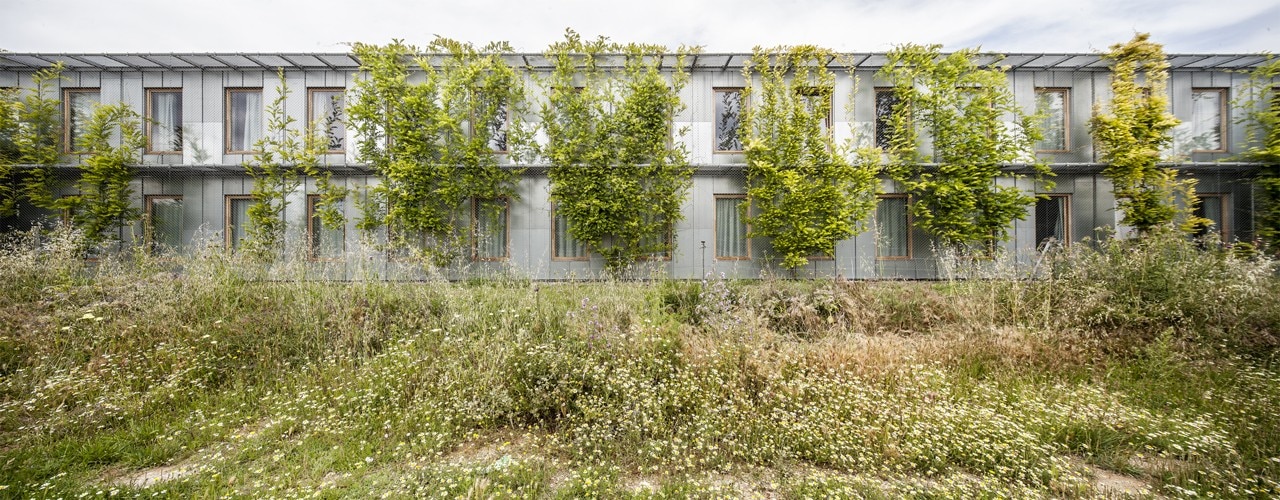
The use of a industrialized system has been decisive for the project development and it has positively conditioned to many decisions related to optimization and rationalism of the industrial process. The project accepted from the beginning the industrialized construction rules opting for a single prefabricated housing model and constructive systems in line with a workshop assembly, trying to use this industrial logic as far as possible.
Industrialization allows to save time, a better execution control guaranties, to implant new dry construction systems and to minimize the production of waste materials during the construction process. It was a great opportunity in design and sustainability terms.
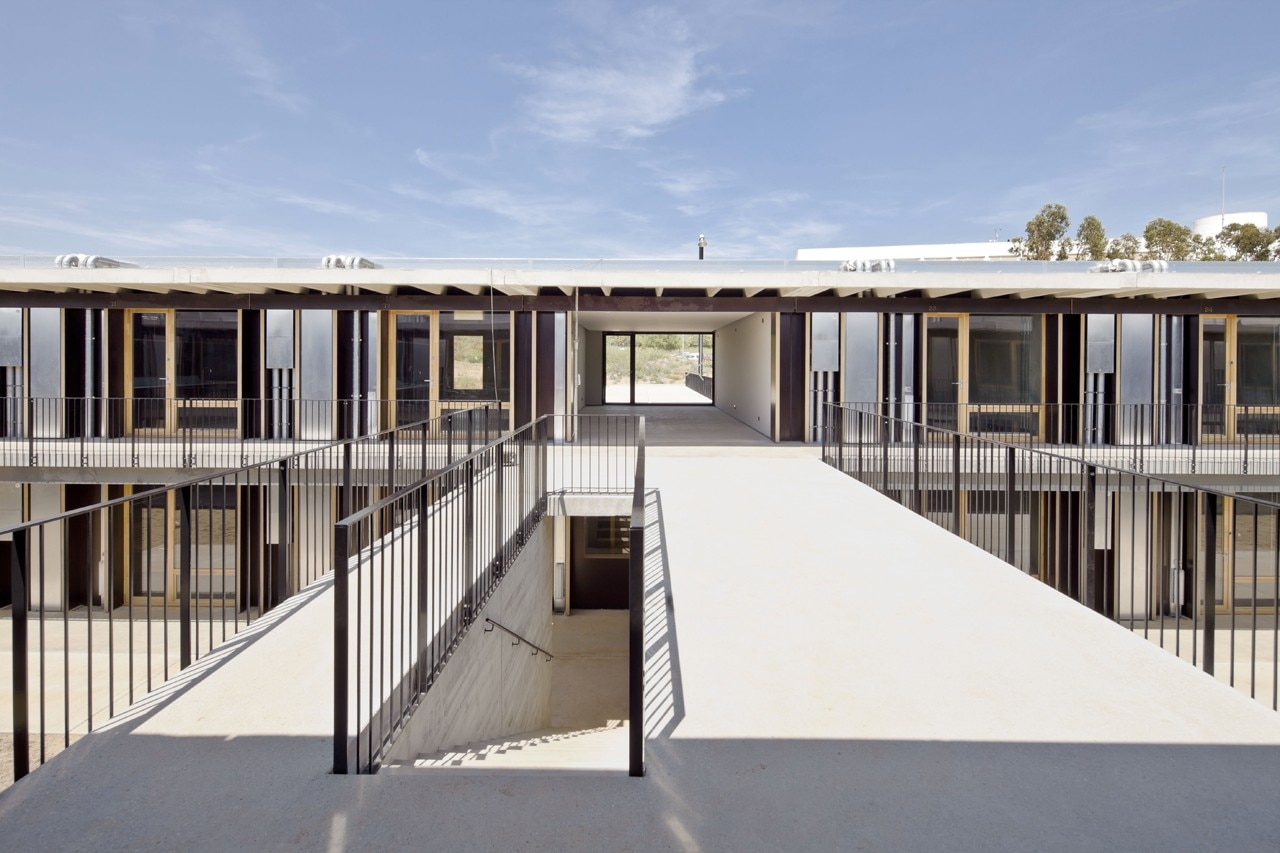
The idea of a “non finished” building has a decisive influence in the material result of the building. On the one hand, it proportionally reduces the environmental impact due to the fact that less material resources are used for the same function. On the other hand it offers you the opportunity of a new, more direct and sincere, way of material expression where building construction appears much clearly.
The original concrete module appears mostly naked, taking positively profit of its materiality, its texture and its thermal inertia. The few interior finishings added are mainly formed by plywood panels often used for the concrete formwork having the advantage of being a renewable and dry joint material and with no finishing need. The kitchen cupboard, made in the same material, have been designed without doors but with a lot of mobile shelves, allowing not only to economize the construction but also allowing students to express the real use of the house in a better way. Installations are exposed, when possible, in a way to make a teaching implementation.
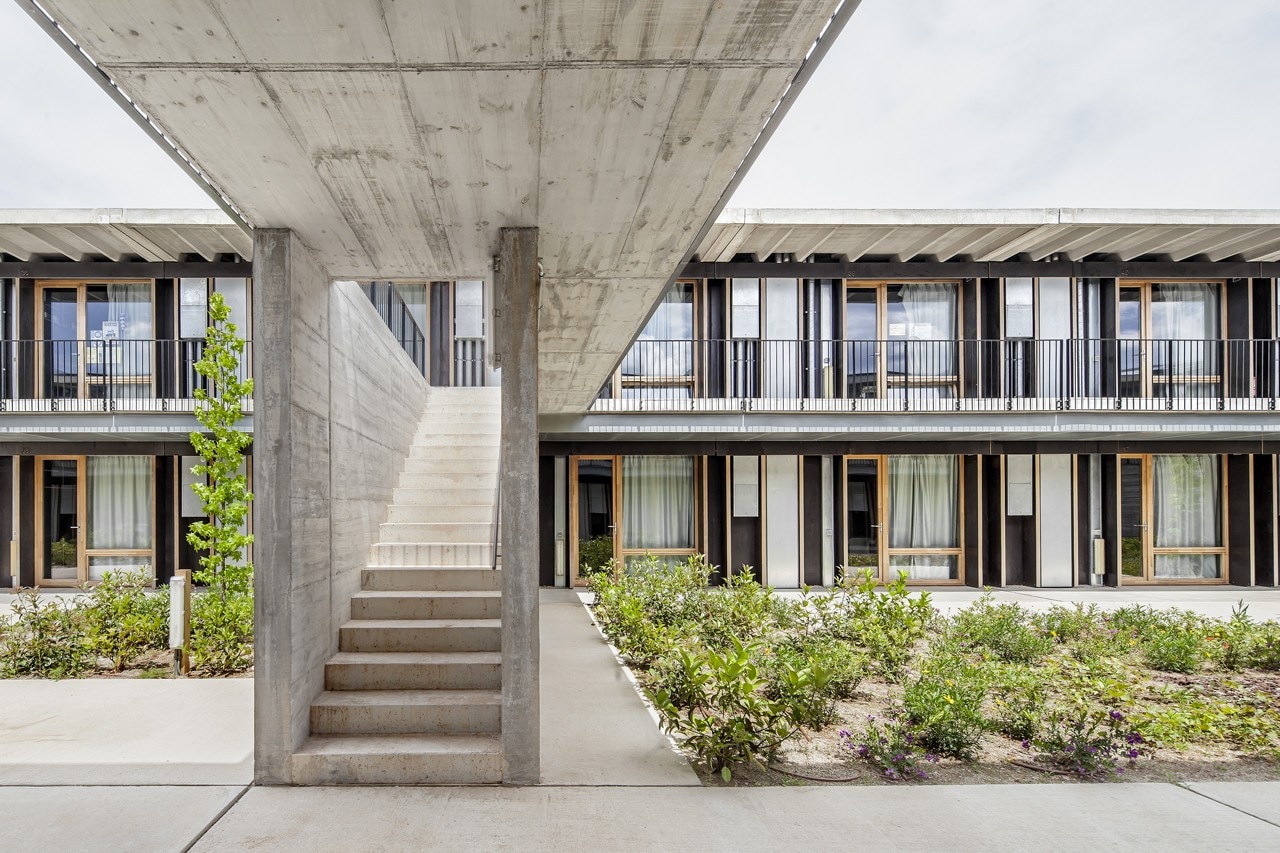
Student Housing in Sant Cugat del Vallè, Barcelona, Spain
Program: student housing
Architects: dataAE and Harquitectes
Collaborators: Toni Jiménez Anglès, Montse Fornés Guàrdia, Anna Tamayo
Team: Societat Orgànica, DSM arquitectes, ÀBAC enginyers
Promotor: UTE d’Aro Compact-Habit Campus de Sant Cugat
Area: 3,101 sqm


